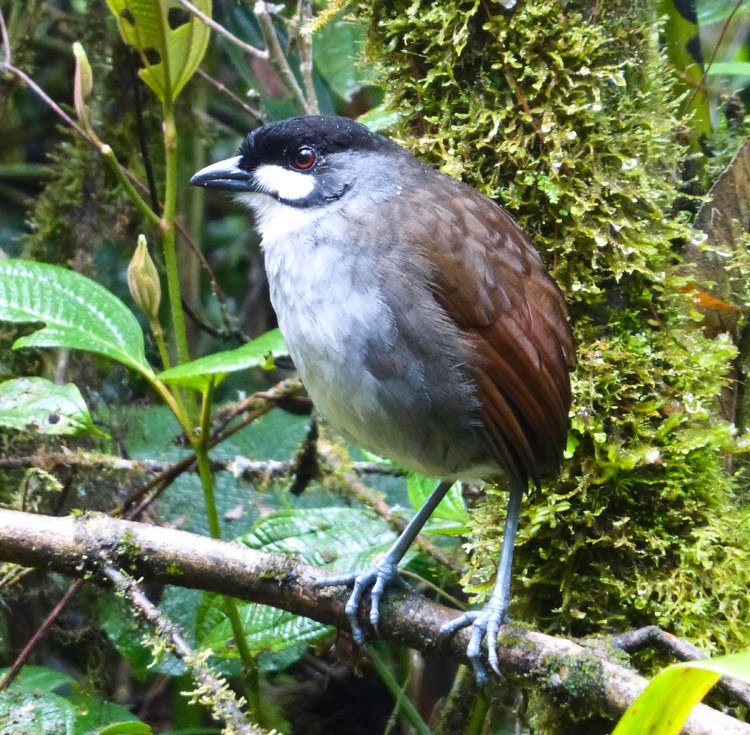The Jocotoco Antpitta (Photos by Narca)
The Jocotoco Antpitta was only discovered in 1997, when ornithologist Robert Ridgely and a local guide were exploring the upper Chinchipe River drainage and heard an unfamiliar bird. They returned the next day with recording equipment, and out of the forest emerged a striking, large antpitta, unlike any known species.
The discovery of such a distinctive bird galvanized the conservation community, and the Fundación de Conservación Jocotoco was formed to safeguard the habitats of Ecuador's very localized, endangered and declining species, like the Jocotoco Antpitta. Thus, the mossy, cloud forest home of the Jocotoco Antpitta is now Tapichalaca Biological Reserve, the flagship reserve of the Jocotoco Foundation. We are privileged to visit.
The (very) wet montane habitat at Tapichalaca Reserve
The Jocotoco Foundation built an ecolodge, Casa Simpson, at the reserve and just off the main road between Vilcabamba and Valladolid. A substantial portion of the cost of staying at the lodge goes to fund their conservation efforts in Ecuador.
Inside Casa Simpson at Tapichalaca Reserve
The foundation took an additional step to help visitors see their famous resident: one of the forest guards from Tapichalaca went to Angel Paz's renowned farm near Mindo, to learn Angel's techniques for training antpittas to come to an offering of earthworms, part of their natural diet. The feeding technique worked, and today the Jocotoco Antpitta is a charming ambassador for Ecuador's conservation program.
After breakfast, we follow our guide Diego on steep, muddy trails for over an hour to the appointed feeding area. We arrive about a half hour late, and the antpittas have grown impatient. Instead of having to whistle or call for them, they are calling for us, and they've ventured a short ways down the trail in our direction!
First we see a fledgling, with its browner cap and less-distinct markings.
A young Jocotoco Antpitta
Diego puts out the day's helping of earthworms, and soon the adults come to feed, and to contemplate us.
Diego replenishes the larder
Waiting for the antpittas with Diego and Patricia
(who also works for the Foundation)
A handsome adult Jocotoco Antpitta, and its fledgling below
White-throated Quail-Dove
We see one other antpitta, the Chestnut-naped, and Diego has saved a few worms for it as well.
A Chestnut-naped Antpitta, probably the Jocotoco's closest relative
A little farther down the trail, we look across the valley to a few palm trees, where the Jocotoco Foundation has put up nest boxes (casitas) for another local species in decline, the Golden-plumed Parakeet. Diego tells us that the parakeets are using the boxes, and as we watch, one flies in.
A Golden-plumed Parakeet at the entrance to its casita
To date, the Jocotoco Antpitta is known from only five locales, including one in the Cordillera del Cóndor on the Peruvian side of that range. The antpitta's entire population is estimated at probably no more than 700, but possibly as low as 150 individuals. It prefers wet montane forest with small streams, Chusquea bamboo thickets, and Silvery-leaved Cecropias, at an altitude of about 7000-9000 feet. Rare plants also flourish here, including 30 endemic species of orchids.


















No comments:
Post a Comment